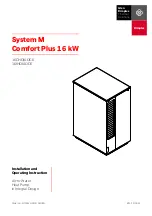
Specifications Information and Repair Parts Manual
BRP500TP2, BRP520TP3, BRP650HP2
800-350-8739
9
MBRP500TP2 Rev A | 3/2020
Please read and save this Owner’s Manual. Read this manual carefully before attempting to operate or maintain this pump. Protect yourself and others by ob-
serving all safety information. Failure to comply with the safety instructions accompanying this product could result in personal injury and/or property damage!
Retain instructions for future reference.
Periodic maintenance and inspection is required on all pumps to ensure proper operation. Unit must be clear of debris and sediment. Inspect for leaks and loose
bolts. Failure to do so voids warranty.
Engine-Driven Centrifugal Pumps
SAFETY GUIDELINES
This manual contains information that is very important to know and
understand. This information is provided for SAFETY and to PREVENT
EQUIPMENT PROBLEMS. To help recognize this information,
observe the following symbols:
Danger indicates an imminently hazardous situation which, if not
avoided, WILL result in death or serious injury.
Warning indicates a potentially hazardous situation which, if not avoided,
COULD result in death or serious injury.
Caution Indicates a potentially hazardous situation which, if not avoided,
MAY result in minor or moderate injury.
NOTE:
Indicates important information that, if not followed, may cause
damage to equipment.
UNPACKING
After unpacking the unit, inspect carefully for any damage that may have
occurred during transit. Make sure to tighten fittings, bolts, etc., before putting
unit into service.
Do not attempt to assemble or operate pump if any parts are missing or
damaged. Determine that all parts are properly installed.
GENERAL SAFETY INFORMATION
1. Know the pump application, limitations, and potential hazards. Read all
manuals included with this product carefully. Be thoroughly familiar with
the pump and the proper use of the equipment.
Do not use to pump flammable or explosive fluids such as gasoline, fuel
oil, kerosene, etc. Do not use in flammable and/or explosive atmospheres.
When pumping hazardous or dangerous materials, use only in room
or area designated for that purpose. For your protection, always wear
proper clothing, eye protection, etc. in case of any malfunction. For
proper handling techniques and cautions, contact your chemical supplier,
insurance company and local agencies (fire dept., etc.). Failure to comply
with this warning could result in personal injury and/or property damage.
2.
Make certain that the power source (engine) conforms to the requirements
of your equipment.
3.
Provide adequate protection and guarding around moving parts.
4. Release all pressure within the system before servicing any component.
5.
Drain all liquids from the system before servicing.
6.
Secure the discharge line before starting the pump. An unsecured
discharge line will whip, possibly causing personal injury and/or property
damage.
7. Check hoses for weak or worn condition before each use, making certain
that all connections are secure.
8. Periodically inspect pump and system components. Perform routine
maintenance as required (See Maintenance section).
9. Provide a means of pressure relief for pumps whose discharge line can be
shut-off or obstructed.
10. Personal Safety:
a.. Wear safety glasses at all times when working with pumps.
b. Wear a face shield and proper apparel when pumping
hazardous chemicals.
c. Keep work area clean, uncluttered and properly lighted; replace
all unused tools and equipment.
d. Keep visitors at a safe distance from the work area.
e. Make workshop childproof – with padlocks, master switches,
and by removing starter keys.
11. Carefully read instruction manuals supplied by engine manufacturer
before attempting to assemble, operate, or service the engine or any
part. The WARNING statements indicate potentially hazardous conditions
for operator or equipment. TAKE NECESSARY STEPS TO PROTECT
PERSONNEL AND EQUIPMENT.
Gasoline is a highly combustible fuel. The improper use, handling, or
storage of gasoline can be dangerous. Prevent accidents by following
these safety rules:
a. Use gasoline only as fuel, never as a cleaning fluid.
b. Use only an approved container to hold or store gasoline. Never
store gasoline in familiar containers such as milk containers or soda
pop bottles.
c. Store gasoline in a cool location, out of reach of children. Never store
gasoline near heat or an open flame.
d. Add gasoline to a cool engine only. Spilled gasoline on a hot engine
may cause fire or an explosion. Fill gasoline tank outdoors and wipe
up any spills.
e. Provide a fire extinguisher nearby when working with gasoline. Be
































